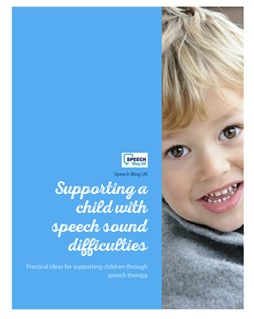Today, I’m going right back to the earliest building blocks of language – babble. Parents are often (understandably) concerned about when their child said their first word. However, there are other stages of development that come before that.
What is babble?
Babies make sound from the moment they are born. Obviously, they cry! They all laugh, burp and make cooing-type sounds. These sounds are all great and important but they are not usually made purposefully. Babies then move on to making strings of consonant and vowel sounds (eg “bababa” or “dadadada”). This is called babble and it’s an important step on the way to words.
Why is babble important?
When they are babbling, babies are learning lots of important communication skills. They learn how to start to move their mouths to make a range of different sounds. They learn how to get someone’s attention! They learn how to try and respond when someone is speaking to them. They learn to make sounds in response to the things that they see, need or want. All of these things are putting building blocks in place to help them to make conversation later on.
When does babble stop?
This is a gradual process. Babies don’t immediately stop babbling as soon as they have said their first words. They will still use lots of babble for quite a while after this, until they are fully able to get across what they want to say with words. So if you have a toddler or older child who has limited language, babble can still be a good thing to encourage. It’s laying down all the groundwork while they are learning more words.
How can I encourage my baby to babble?
Some children with language difficulties don’t babble as much as others when they are babies. If you are concerned that your child isn’t babbling enough, here are some tips to try.
- Give eye contact. Eye contact is always important in language development. There are more tips on developing eye contact here, though some of these will be too sophisticated for babies. With a baby, hold your baby close so that you are face to face. Babies have limited sight and hearing to begin with so having them close to you means that they can see your face and hear your sounds as well as possible. With an older child, you maybe won’t be picking them up quite as much but sit on the floor opposite them as often as you can so that you are face to face.
- Babble yourself. You might feel a bit silly doing this to start with, but give it a go! Make silly strings of sound yourself while you are interacting with your baby. If you find this really hard to do, try attaching it to everyday routines or repeating a simple real word to begin with. For example, while you are feeding your baby, say “mumumumumum” or when going up the stairs say “up up up up up”. This will show your baby what to do.
- Make other silly sounds. Anything that helps your child to explore sounds that their mouths or others can make is useful. Blow raspberries. Suck air into your cheeks and squash it out with your hands. Blow kisses. Do fake yawns, coughs, sneezes and snores. If your child shows interest, do it again. Don’t worry if they can’t copy to start with – let them enjoy watching you and see if they will indicate in some way that they are enjoying it and want you to do it again. Do they reach out? Laugh? Move their mouth as if they are trying to copy?
- Copy sounds your child makes. If your child makes any sounds to you, copy them back. Then wait and see if your child will vocalise again. Repeat the process and see if you can have a babble conversation with your child. Some children will have only one or two syllable combinations which they use in their babble. For example, I have worked with a few children who only say “duhduhduh”. If this is the case, start by copying that back, but then change the sound in your replies gradually (eg “buhbuhbuhbuh”). Again, don’t worry if your child can’t copy this straightaway – just try and encourage them to listen to you.
- Copy other movements. Encourage your child to copy other movements, not just sounds. Clap, pat your hands on the floor, stomp, pull faces, wave. See if your child will copy movements that you make. Use the same technique of copying their movements too to give them the idea.
- Use exaggerated intonation! Those higher pitched voices that people use to talk to babies actually have a purpose! Babies and small children do respond well to changes in pitch – the difference in sound helps them to pay attention. Don’t feel like you have to do this all the time, but sometimes give it a go and see if it makes a difference!
As with developing any skill, be patient, it takes time. And make sure that you encourage your child by responding positively when you hear babble – if they get a good reaction, they are more likely to try again. Good luck!







Leave a Reply